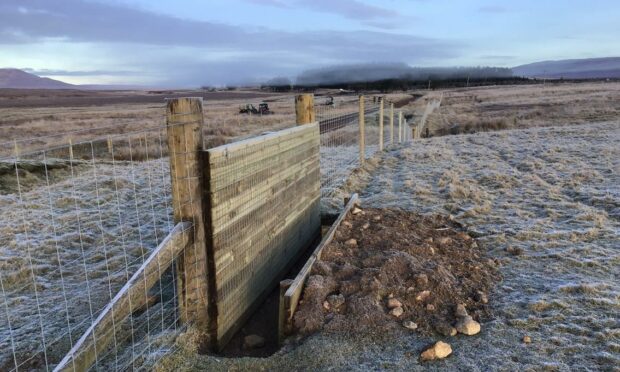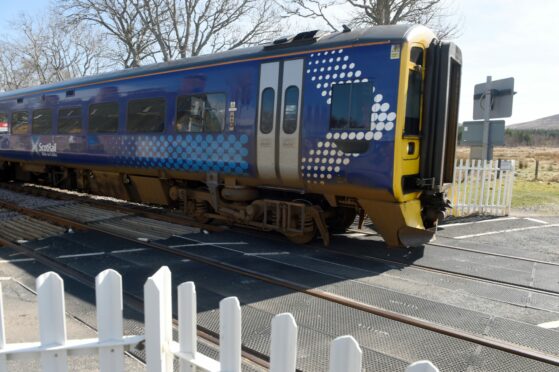Network Rail have addressed a number of “problematic locations” along the Far North railway line to help preserve the life of the deer species.
Engineers have constructed a total of 15 deer leaps along an eight mile stretch of railway line in Sutherland connecting Kinbrace and Forsinard train stations.
Deer leaps were first introduced on the line on an experimental basis back in 2019 to help prevent calves and juveniles becoming trapped on the line and at risk of being hit by an oncoming train.
Around one fifth of animals struck by trains on the Scottish rail network involve deer.
Their latest endeavour forms part of ongoing work to renew more than five miles of boundary fencing in the area; a project worth almost £200,000.
Officials are hopeful the measures will help not only reduce the number of collisions but safeguard the welfare of the species for generations to come.
Rectifying ‘problem locations’
Senior assert engineer Jonathan Callis, said installing these leaps has helped rectify a number of “problem locations” along the route.
“Wild deer are an integral part of Scotland’s wildlife and ecology and occur the length and breadth of our network,” he said.
“Solutions like this allow us to reduce the risk of collisions at ‘problem locations’ where deer are known to cross our land and positively contributes overall to deer welfare.
“It will not solve the problem completely as wild deer can attempt to cross the railway anywhere and at any time, but at these hotspots, the leaps should make for a quicker, easier and safer crossing for the deer.”
He added: “Installation of these leaps promotes deer welfare across the estate, while maintaining a safe and secure railway for the public.”
The leaps were masterminded to become a viable escape route for all deer, especially for the smaller ones.
Ground levels are changed on either side of the fence to assist quick, safe access and exit when crossing the railway.
The leaps have been placed at areas where it is obvious deer regularly congregate and cross the railway.
These locations have been identified and highlighted to Network Rail through engagement with the gamekeeper on the Auchentoul estate which borders the railway.
Duncan Bentley, gamekeeper of the Achentoul estate said: “Deer management is an essential part of the eco system in the area and these measures will safeguard the deer and public safety on the railway line whilst ensuring deer will still be able to move about freely and reduce the number of potential accidents to them.
“Everyone at Achentoul Estate is grateful for the cooperation and understanding shown by Network Rail in installing deer leaps on the estate.”

